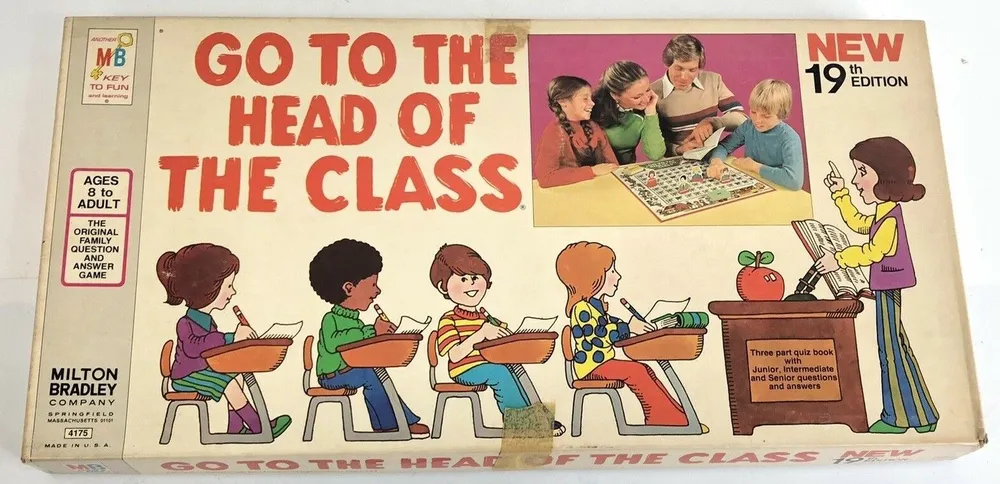Go to the Head of the Class (1936)
Go to the Head of the Class
“Go to the Head of the Class” is a roll-and-move board game published originally by the Chad Valley Co Ltd. in 1936 and later by Milton Bradley (now owned by Hasbro). The game was last produced by Winning Moves USA in 2013. The game is designed to look like a top view of a school classroom with the teacher’s blackboard at one end. Players advance to the “head of the class” by moving tokens from desk to desk as a result of answering questions correctly. The game includes random “chance cards” that add or subtract positions without involving a question, such as “Put away that peashooter and go back 3 desks” or “For good penmanship, advance two desks”.
Significance and Gameplay
The game is popular and significant because it tests players’ knowledge in various subjects, including Language, Science, Art & Music, Mathematics, History, Literature, and Geography. The game has been produced in various editions, with some being vintage and collectible.
Game Components of Go to the Head of the Class
How To Setup Go to the Head of the Class
To set up the game, place the board in the center of the table. Shuffle the luck and examination cards and place them on their corresponding spaces on the board. Players choose their difficulty level from the junior, intermediate, or senior sections of the question booklet. Each player selects a playing piece and rolls the dice to determine which desk they start on. The player starting on the lowest numbered desk goes first.
Gameplay Mechanics and Game Objective
Player Experience
Playing **Go to the Head of the Class** is an engaging and somewhat nostalgic experience. The game is designed for 2-6 players and is suitable for children aged 6 and above. The gameplay is straightforward, with a mix of luck and knowledge that keeps players entertained. However, the game’s simplicity and repetitive nature may make it less appealing to adults or players seeking more complex strategies.
Pros
Cons
Personal Thoughts on Go to the Head of the Class
**Go to the Head of the Class** is a game best suited for families with young children or for those looking for a light, educational game. While it may not have aged well in terms of complexity, it remains a charming and easy-to-understand game that can still provide a fun and educational experience for its target audience. However, it may not be the best choice for players seeking more intricate gameplay or strategic depth.
We are supported by our audience. When you purchase through links on our site, we may earn an affiliate commission, at no extra cost for you. Learn more.

